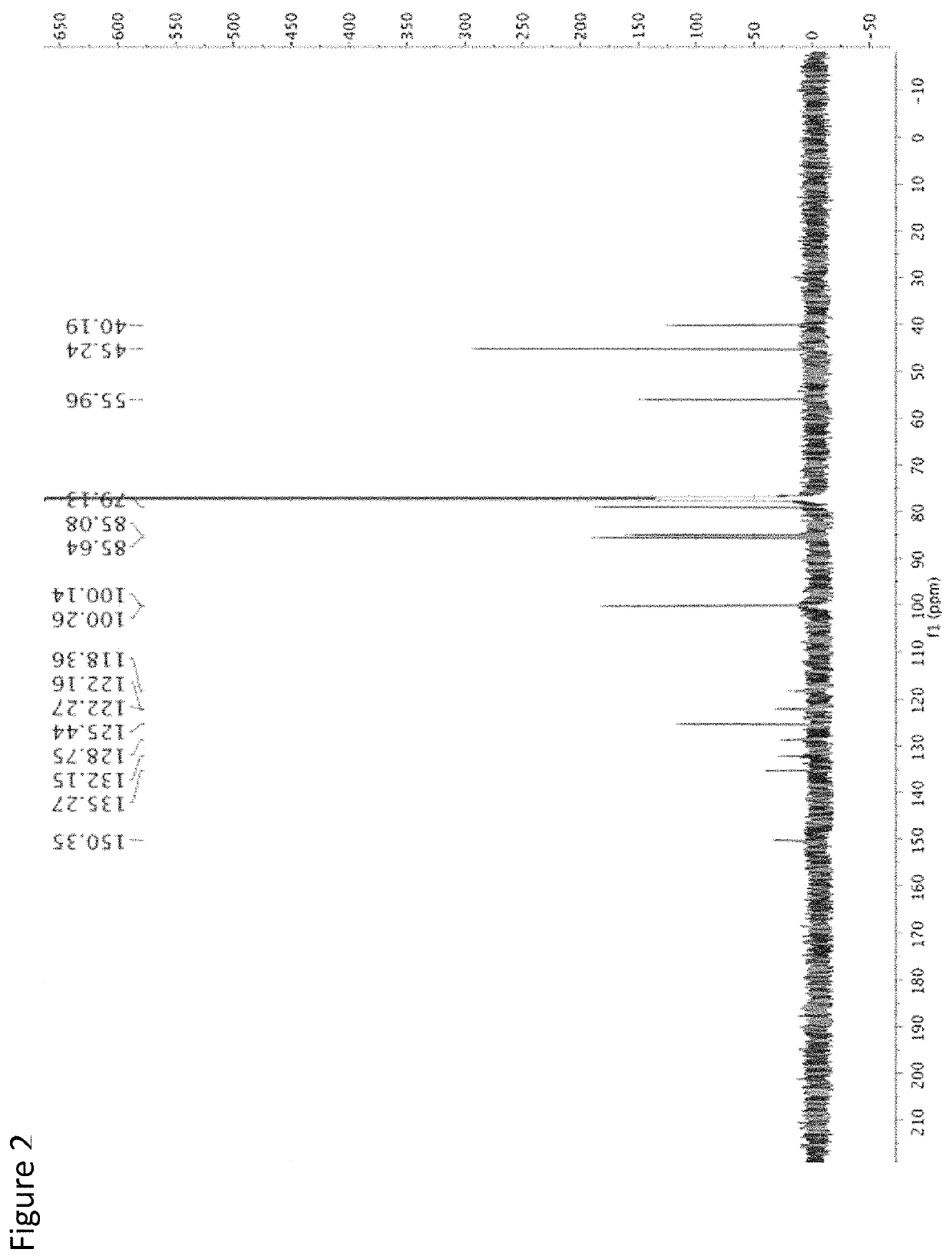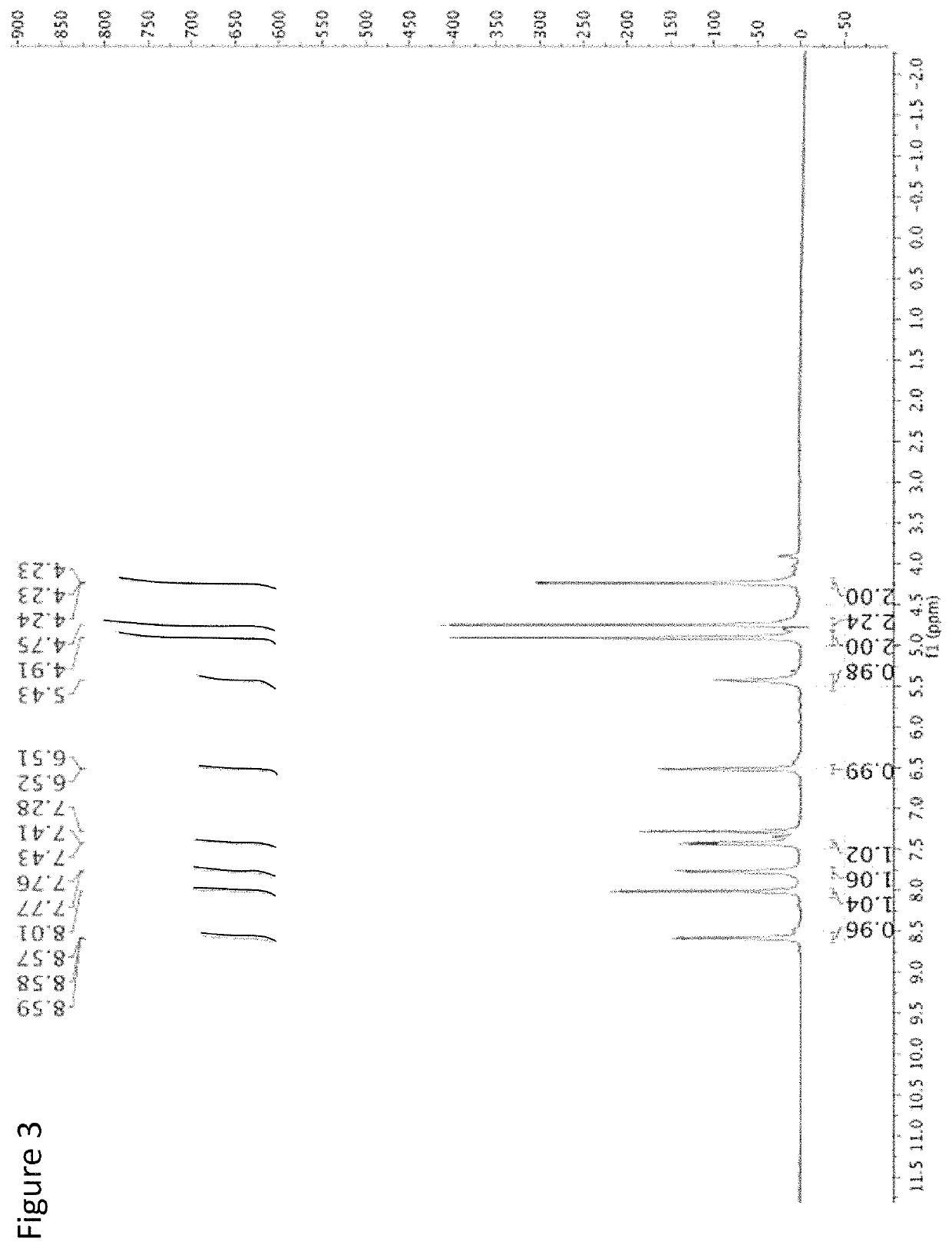Use of cymanquine compounds as antimalarial agents
a technology of cymanquine and compounds, applied in the field of use of cymanquine compounds as antimalarial agents, can solve problems such as unwanted side effects, and achieve the effects of promoting cell membrane penetration, minimizing problems of steric bulk, and small structural “cones
- Summary
- Abstract
- Description
- Claims
- Application Information
AI Technical Summary
Benefits of technology
Problems solved by technology
Method used
Image
Examples
example 2
[0080]The following is an example of the characterization of CMQ and derivatives thereof.
[0081]Anodic Electrochemistry of CMQ Family. The electrochemical behavior of the three manganese compounds shown below was studied.
[0082]
[0083]Electrochemical studies were carried out. The electrolyte solution used for these studies, namely dichloromethane with 0.05 M [NBu4][B(C6F5)4] as the supporting electrolyte, is known to provide an optimum medium for the electrochemical oxidation of compounds containing the MnCp(CO)3 (Cp=η5-C5H5) backbone (Laws et al., J. Am. Chem. Soc. 2008, 130, 9859). The potentials given here are referred to the ferrocene / ferrocenium reference couple. The experiments were carried out in a controlled atmosphere which minimizes exposure to oxygen and water. We refer to two types of standard electrochemical techniques that are commonly described in books on electrochemistry: cyclic voltammetry and bulk electrolysis (Bard, A. J.; Faulkner, L. R. Electrochemical Methods, Jo...
example 3
[0094]The following is an example of a use of CMQ and derivatives thereof.
[0095]P. falciparum strains were cultured under standard conditions in RPMI1640 medium supplemented with 0.5% Albumax in 90% N2, 5% 02 and 5% CO2. A modified version of the [3H]-hypoxanthine incorporation method was employed for assessing growth inhibition by the inhibitor compounds. Briefly, P. falciparum strain Dd2 or strain D10ydhod (this strain express the Saccharomyces cerevisiae dihydroorotate dehydrogenase enzyme which renders mitochondrial electron transport nonessential in the parasite) parasites were seeded at 2% parasitemia in 96-well plates and treated with varying concentration of the inhibitors as well as the solvent (DMSO) for 24 h. [3H]-Hypoxanthine was added to the cultures and incubation was continued for an additional 24 h. Incorporation of [3H]-hypoxanthine by the parasites was determined by liquid scintillation. Growth inhibition was assessed as decrease in [3H]-hypoxanthine incorporation ...
PUM
| Property | Measurement | Unit |
|---|---|---|
| temperature | aaaaa | aaaaa |
| water-soluble | aaaaa | aaaaa |
| Mn | aaaaa | aaaaa |
Abstract
Description
Claims
Application Information
 Login to View More
Login to View More - R&D
- Intellectual Property
- Life Sciences
- Materials
- Tech Scout
- Unparalleled Data Quality
- Higher Quality Content
- 60% Fewer Hallucinations
Browse by: Latest US Patents, China's latest patents, Technical Efficacy Thesaurus, Application Domain, Technology Topic, Popular Technical Reports.
© 2025 PatSnap. All rights reserved.Legal|Privacy policy|Modern Slavery Act Transparency Statement|Sitemap|About US| Contact US: help@patsnap.com



